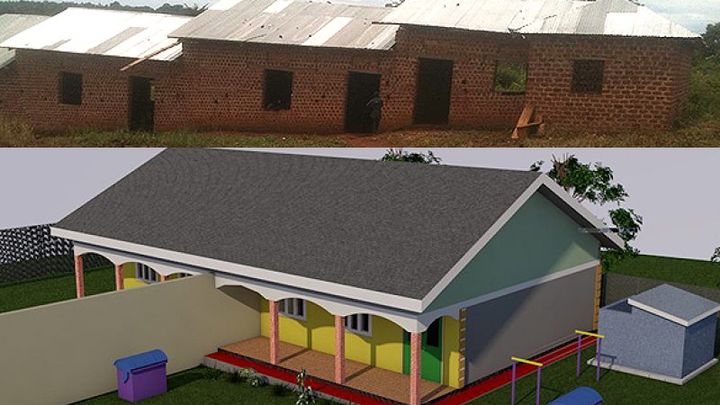
Teacher's Dormitory Buyijja School
“Impossible is just a word thrown around by small men who find it easier to live in the world they’ve been given than to explore the power they have to change it. Impossible is not a fact. It’s an opinion. Impossible is potential. Impossible is temporary. Impossible is nothing.”
-- Muhammad Ali
What I have found in life, is that changing the impossible to something achievable, is simply done through repetition, determination, and hard work. Impossible, to improbable, to achievable, to success, is not done by dreaming, or wishing. Success in the light of inconceivable odds is done by planning, taking action, and adapting when you reach roadblocks.
If you had told me that two years ago, I would be writing to engage you in a project that would change the lives of children in a rural village in a remote part of Central Africa, I would have told you that it was “impossible.” And yet, here today…we are endeavoring to take the first steps of another journey that will change the lives of countless lives, as well as the teachers who shape those lives, simply because we can.
“It isn’t the mountains ahead to climb that wear you out; it’s the pebble in your shoe.” –Muhammad Ali
Goals and challenges are often bred from the same source; need. The greatest inventions, the most important movements, the changes that make the most difference in the lives of others all come from solving a problem when it arises, and working through the “pebble in your shoe” when the journey seems too difficult or irritatingly painful.
In the case of our work for the Buyijja Village School, our success has created a seemingly insurmountable problem, complicated by more than one “pebble in the shoe.”
The Problem(s)
Due to the success that we have helped to create at our school, the numbers of students has grown from 170 to more than 240 students. A great number of these children are coming from neighboring villages or areas not served by other schools. Because of this, there was a need to add more teachers to the staff. Due to the inability for many of children to pay tuitions (more than 40% of the youth population in Buyijja are orphans), several of these new teachers come from distant home towns, and are not paid enough to be able to afford housing. As a result, they have “taken up temporary residence” in the former office and storage area of the headmaster. Three young women, and one young man are sharing space that has no amenities and is not suitable for long-term habitation. They are living in this room, for the full length of the three-month term, with no other viable options.
The Solutions…in Three Phases
There are two unused assets at the school. One is a dilapidated, currently uninhabitable building. The other is more than 20 acres of land. The solution to several problems comes from three primary phases that will help the school evolve and prosper in a way that is both achievable and sustainable.
Phase I- Teacher Dormitories
Teachers who are dedicated to the education and well-being of the students are paramount to the overall success of the school, and the lives changed by the education provided. While giving the teachers more pay is certainly something that can help, it does nothing in the long run to solve the issue of the remote location of the school. The village offers little in the way of housing opportunities, and “commuting” from other villages is not a viable daily option. Improving the existing building in three phases, the first being teacher dormitories with separate bathrooms and water source, is the first logical step toward stability. The teachers would be provided meals and board as part of their contracts.
The building must be stabilized, and a security fence installed. The room to be used as a teacher dormitory will be divided by gender, allowing for up to 4 teachers of each gender.
Two small bathrooms will be built for this facility, and a large water storage tank, with two smaller dispersion tanks will provide water for washing. Another borehole well near the building is also considered to be necessary at the end of Phase II.
Solar lighting, with the ability to charge portable devices, and even run a laptop computer will be added.
Estimated costs of Phase I - $8,750
Phase II- Children's Dorm
Phase III- Vocational Eduction Center for Farming, Sewing and Carpentry.
For Further Information about our mission, our past accomplishements and goals, go to:
http://www.friendsofbuyijja.com
My sincere thanks to all of you who help us in our mission to change the lives of children, by offering hope.
Peace, Love and Hope
Patric Miller
Friends of Buyijja